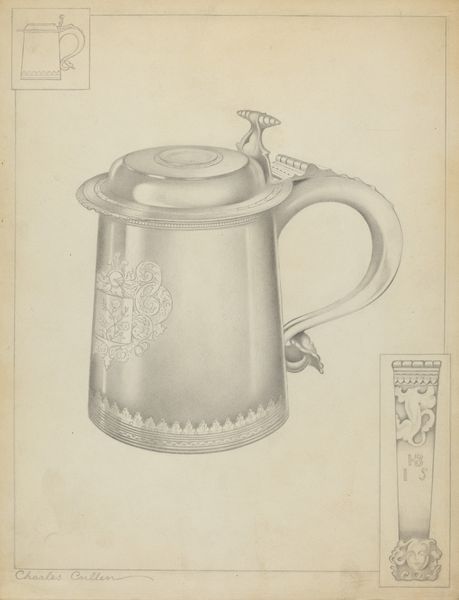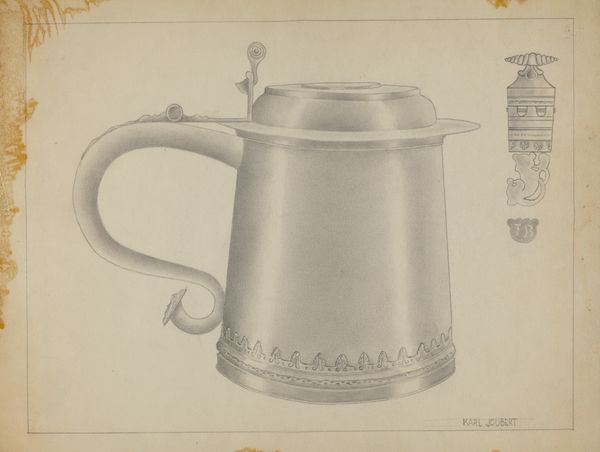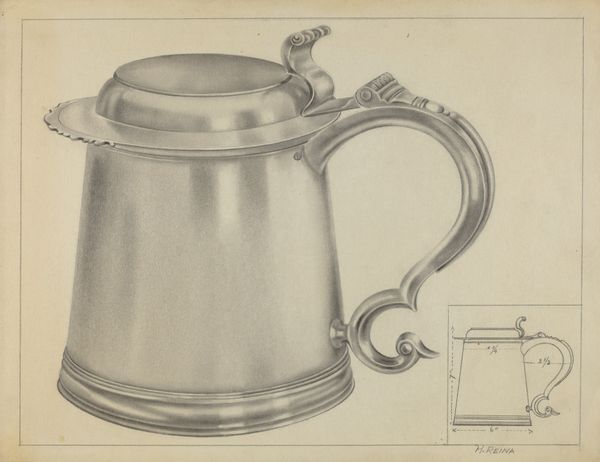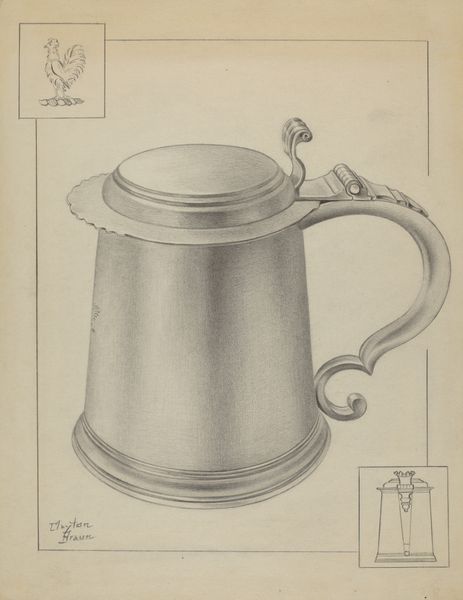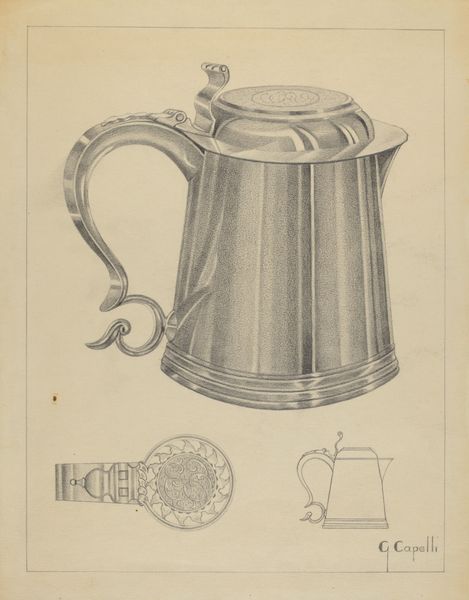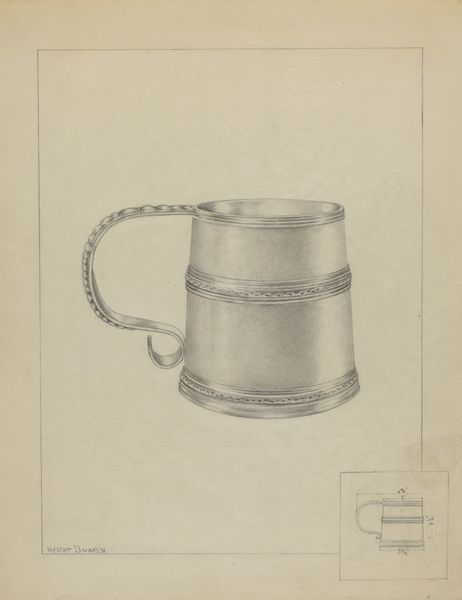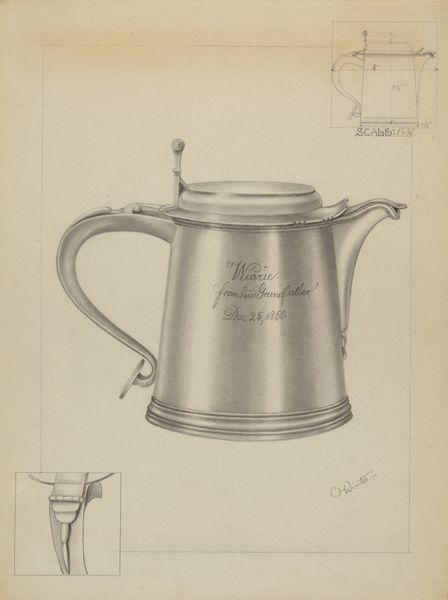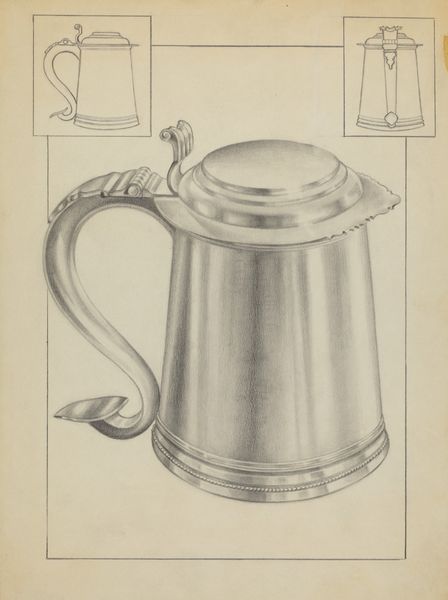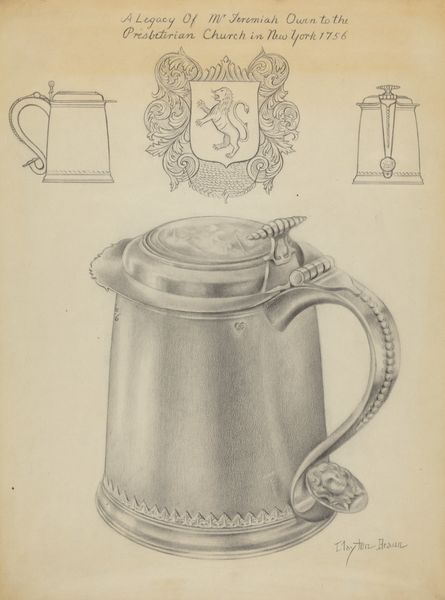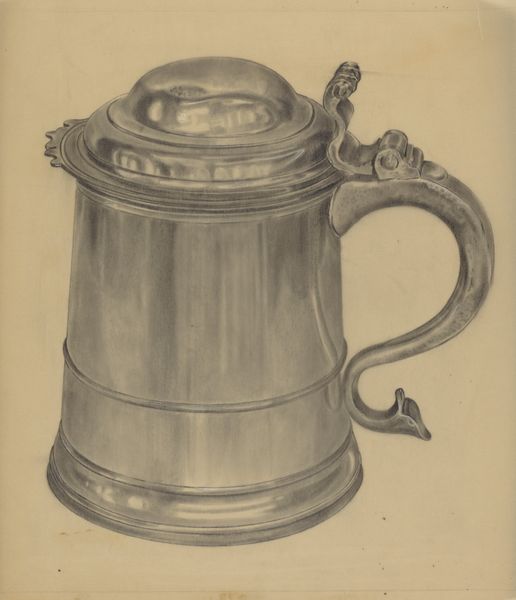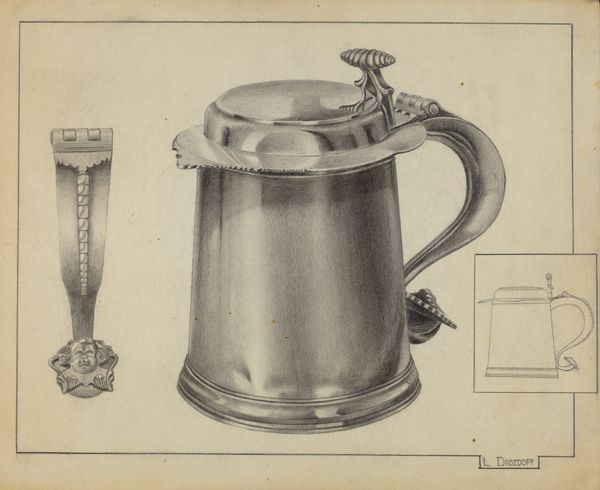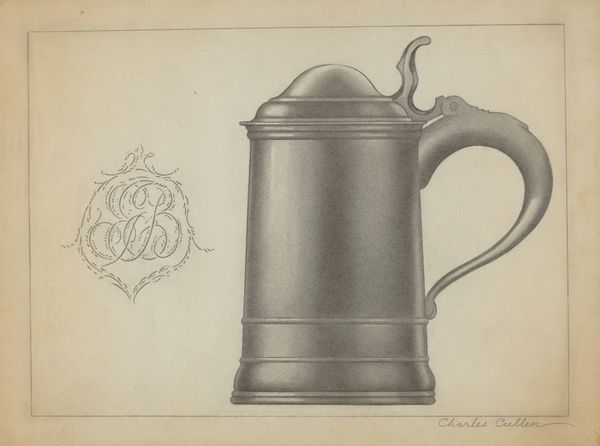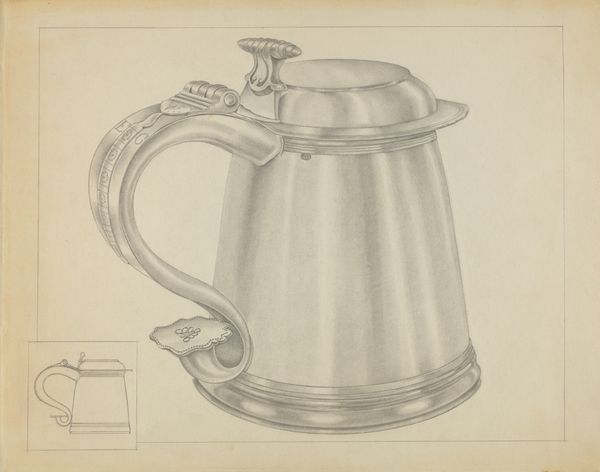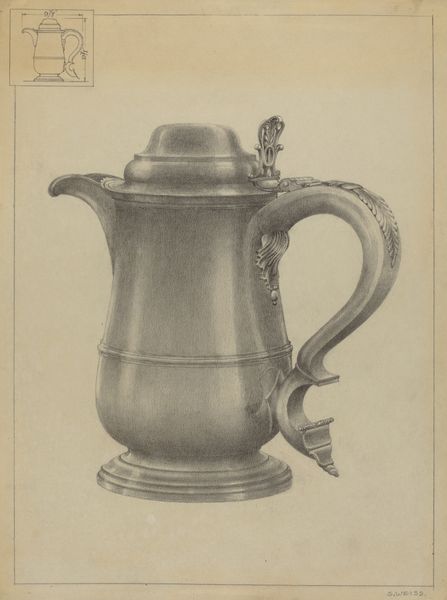
drawing, pencil
#
pencil drawn
#
drawing
#
pencil
#
academic-art
Dimensions: overall: 29.1 x 22.9 cm (11 7/16 x 9 in.) Original IAD Object: 8" high; 6 1/2" wide
Copyright: National Gallery of Art: CC0 1.0
Curator: This is Hester Duany's "Silver Tankard," created around 1936, a pencil drawing that meticulously captures the details of a crafted object. What strikes you about it initially? Editor: The realism, absolutely, and almost a coldness despite being a drawing. You can feel the metal—its weight and the labor that went into its creation. It’s less celebratory and more like a document. Curator: Documents reveal values, of course. Tankards themselves were loaded with symbolism—power, prosperity, community. They represented hospitality and fellowship, often passed around at gatherings. It seems the artist even sketched decorative options around the main image, no? Editor: Right, like shop drawings! What interests me is this emphasis on craftsmanship and industrial process. In 1936, this wasn’t a ‘high art’ subject. There is also no actual indication of what its material actually is beyond the titular designation of “Silver.” A silver-plated mug is rather different from solid silver in cost, prestige, social meaning… Curator: True, the depiction could be aspiration more than record. Those smaller detail studies surrounding the central tankard act like marginalia. Perhaps exploring monograms, handle details… they give clues to its potential owner's identity and taste. Editor: That repeated rendering, though. It screams production line rather than individualized meaning. Were these design ideas? Options? What about who *made* the thing itself? That narrative feels suppressed in favor of its owner or purchaser. Curator: Fascinating! I saw the symbolism dominating, you saw production dominating. Duany certainly captured an object holding complicated cultural and economic meaning. Editor: I’m leaving thinking of the silversmith now. That silent history matters as much as any heraldry.
Comments
No comments
Be the first to comment and join the conversation on the ultimate creative platform.
